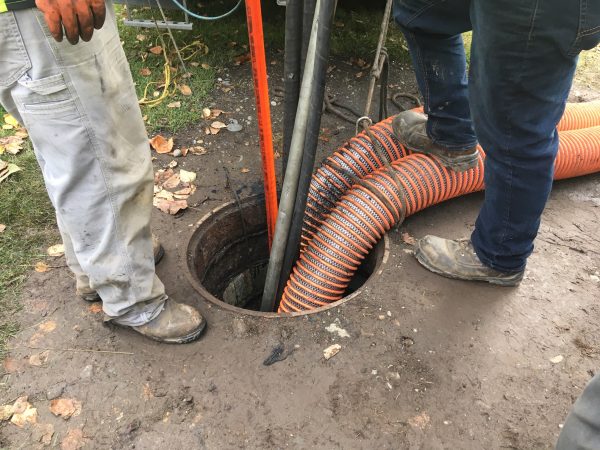
Sewage moves beneath the streets of Anchorage in more than 700 miles of sewer lines. But other items wind up in those lines, too — things like toys, clothes and shoes.
Local utility managers now hope a new high-powered vacuum system will help remove some of those things, improving flow and extending the life of the entire system.
“We’re able to clean in one week what used to take us a month, and we wouldn’t even get it as clean,” said Sandy Baker, the public outreach coordinator for the Anchorage Water and Wastewater Utility.
The utility began using the new equipment this summer, Baker said. First, a high-velocity jetter truck draws water from a hydrant and shoots it into the sewer main to loosen any blockages, then a hydraulic power pack sucks it all up into a 25-cubic-yard vacuum box.
The vacuum box can hold up to 60,000 pounds of accumulated sediment and debris. Crews bring it all back to the South Anchorage operations center, dump it out, drain the water, dry it up, then hauls it off to the landfill for disposal. By this point, it resembles a pile of dirt.
In years past, much of it would have remained in the sewer mains, Baker said. New technology is changing that. It’s saving money, too. Instead of paying $11 million to hire an outside company to clean just a portion of the city’s pipes, Baker said AWWU invested $2.6 million in the equipment to do the job itself.
Withing 13 days, she said, utility crews had removed approximately 209 tons of debris from 1,650 lineal feet of 48” sewer pipes.
The utility plans on using the new equipment regularly now, Baker said. It’ll help keep Anchorage’s sewer system flowing smoothly — which is good news for everyone, because when the pipes are blocked, there’s only one place for the sewage to go.
“It’s gonna start backing up in people’s houses,” she said. “And nobody wants that happening.”
Kirsten Swann is a producer and reporter for Alaska Public Media.




